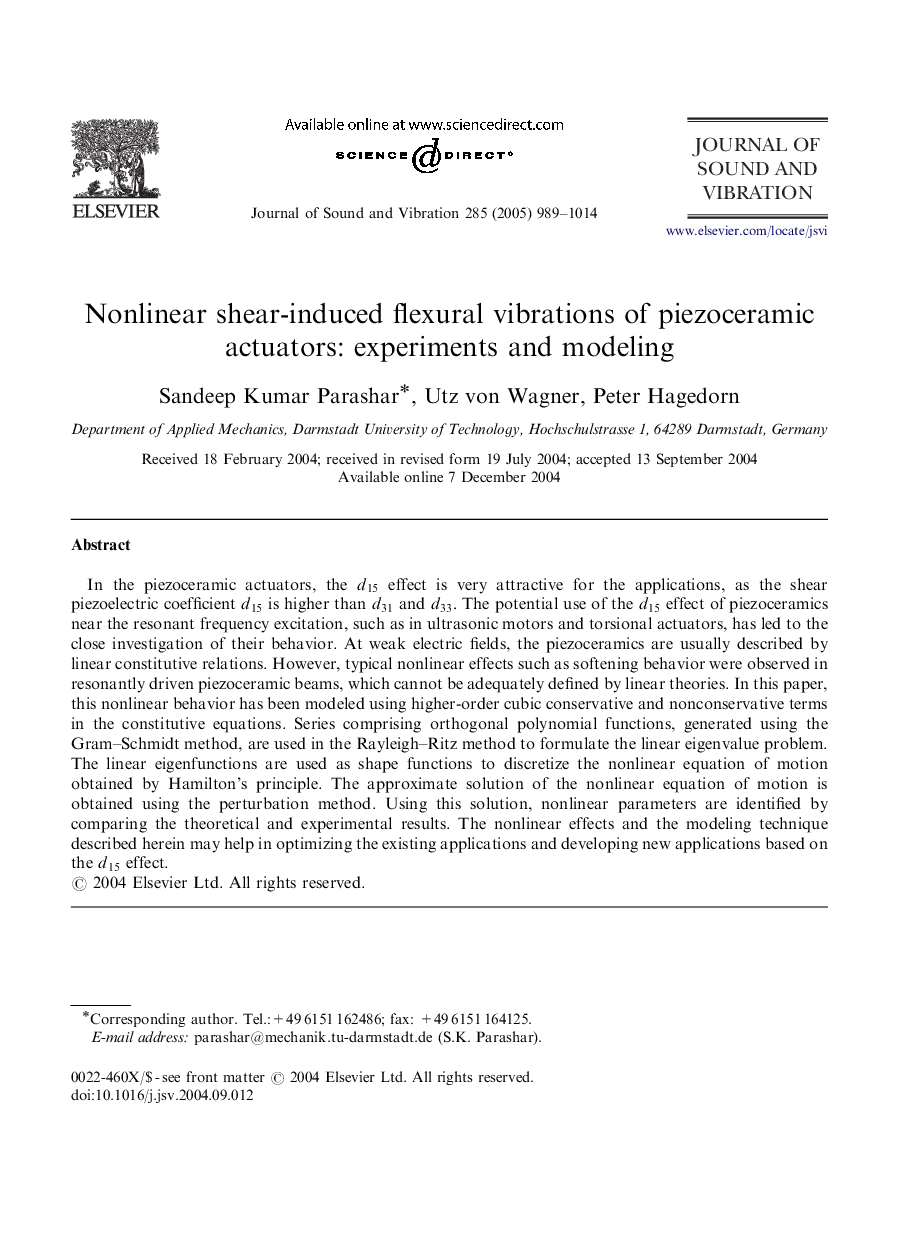| Article ID | Journal | Published Year | Pages | File Type |
|---|---|---|---|---|
| 9640403 | Journal of Sound and Vibration | 2005 | 26 Pages |
Abstract
In the piezoceramic actuators, the d15 effect is very attractive for the applications, as the shear piezoelectric coefficient d15 is higher than d31 and d33. The potential use of the d15 effect of piezoceramics near the resonant frequency excitation, such as in ultrasonic motors and torsional actuators, has led to the close investigation of their behavior. At weak electric fields, the piezoceramics are usually described by linear constitutive relations. However, typical nonlinear effects such as softening behavior were observed in resonantly driven piezoceramic beams, which cannot be adequately defined by linear theories. In this paper, this nonlinear behavior has been modeled using higher-order cubic conservative and nonconservative terms in the constitutive equations. Series comprising orthogonal polynomial functions, generated using the Gram-Schmidt method, are used in the Rayleigh-Ritz method to formulate the linear eigenvalue problem. The linear eigenfunctions are used as shape functions to discretize the nonlinear equation of motion obtained by Hamilton's principle. The approximate solution of the nonlinear equation of motion is obtained using the perturbation method. Using this solution, nonlinear parameters are identified by comparing the theoretical and experimental results. The nonlinear effects and the modeling technique described herein may help in optimizing the existing applications and developing new applications based on the d15 effect.
Related Topics
Physical Sciences and Engineering
Engineering
Civil and Structural Engineering
Authors
Sandeep Kumar Parashar, Utz von Wagner, Peter Hagedorn,
